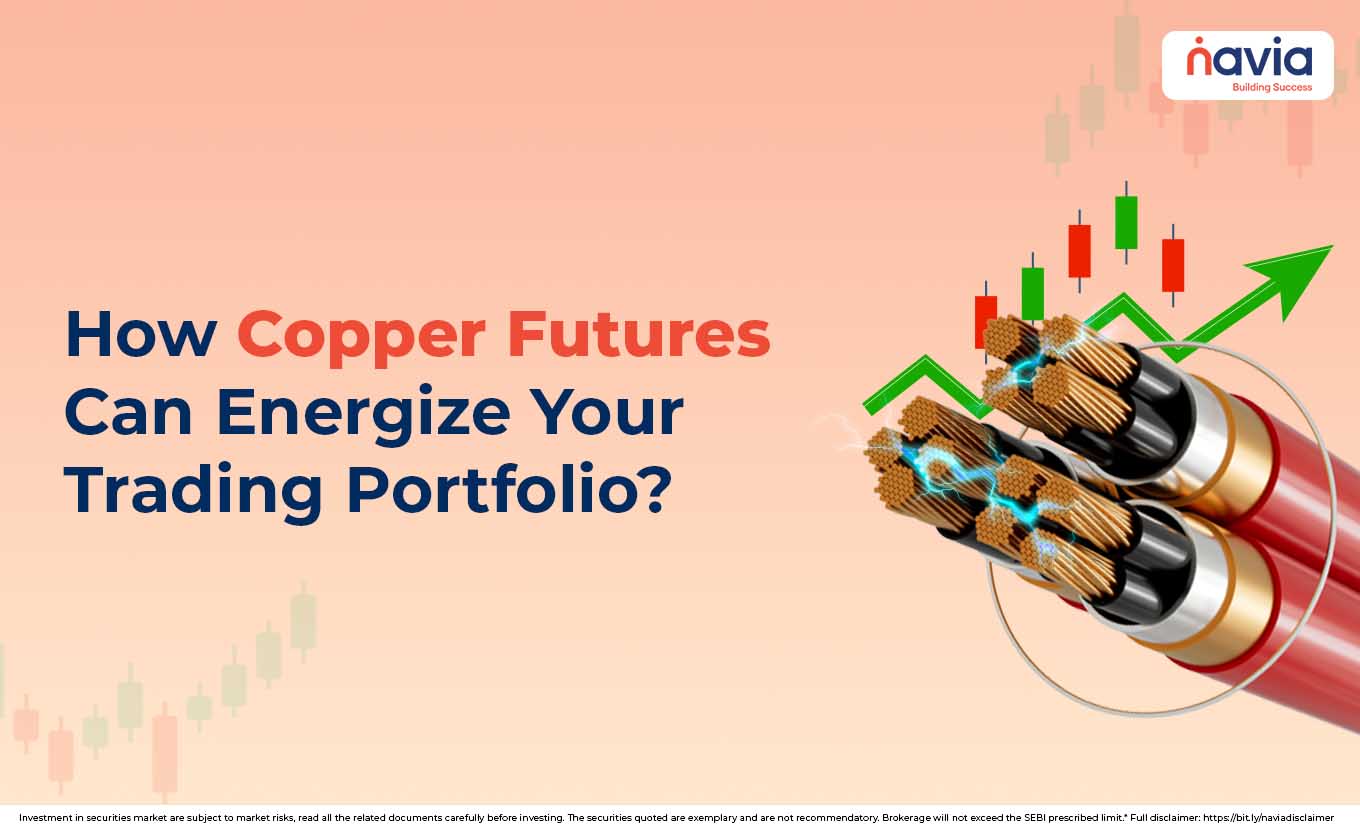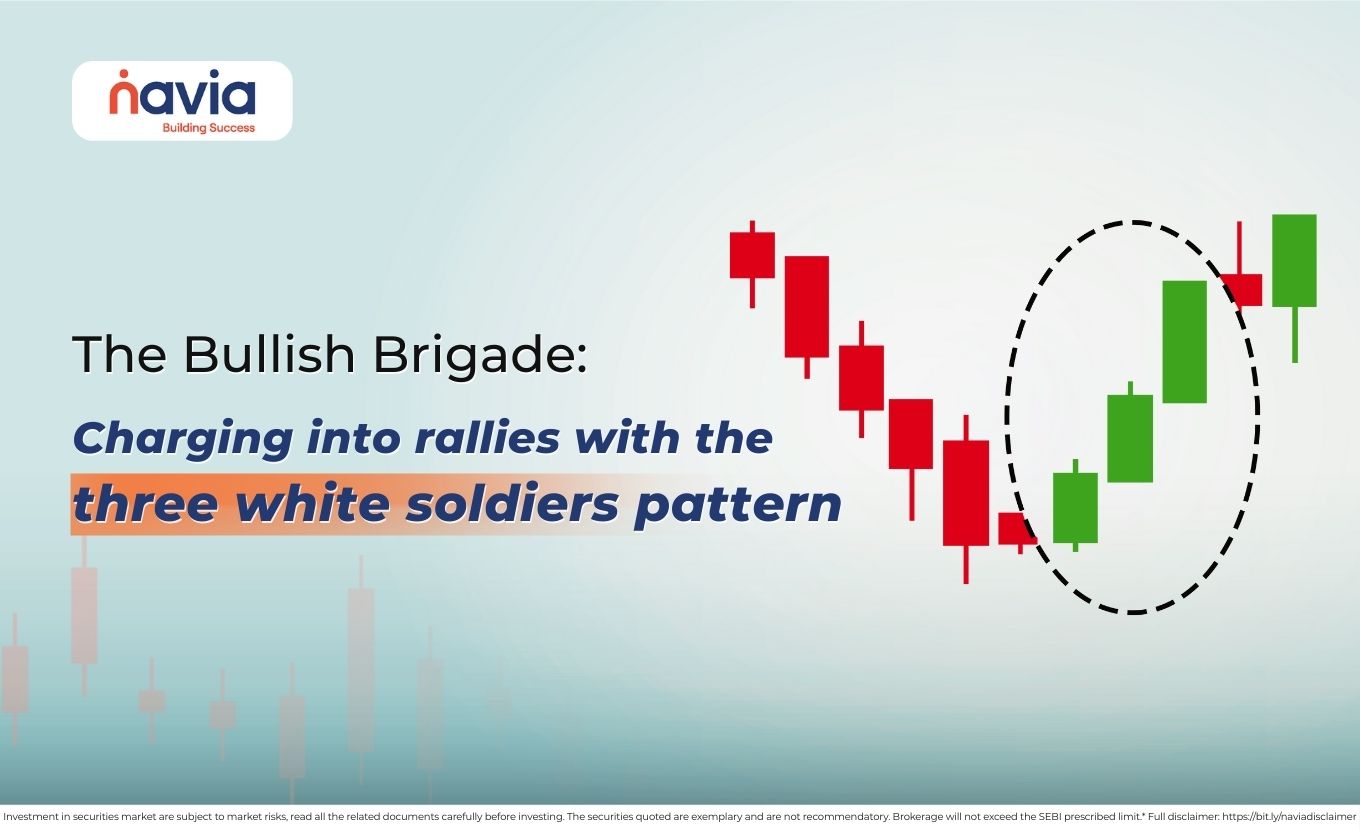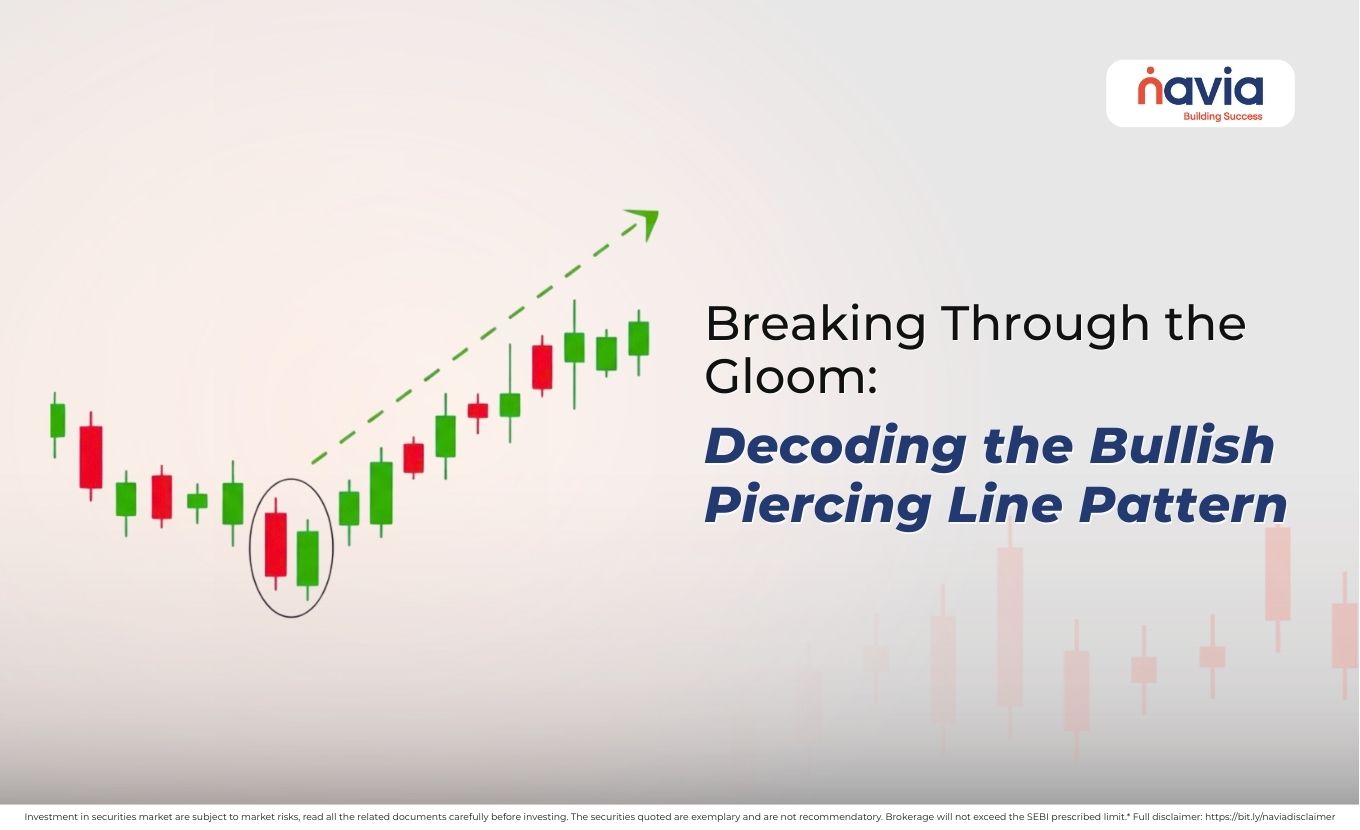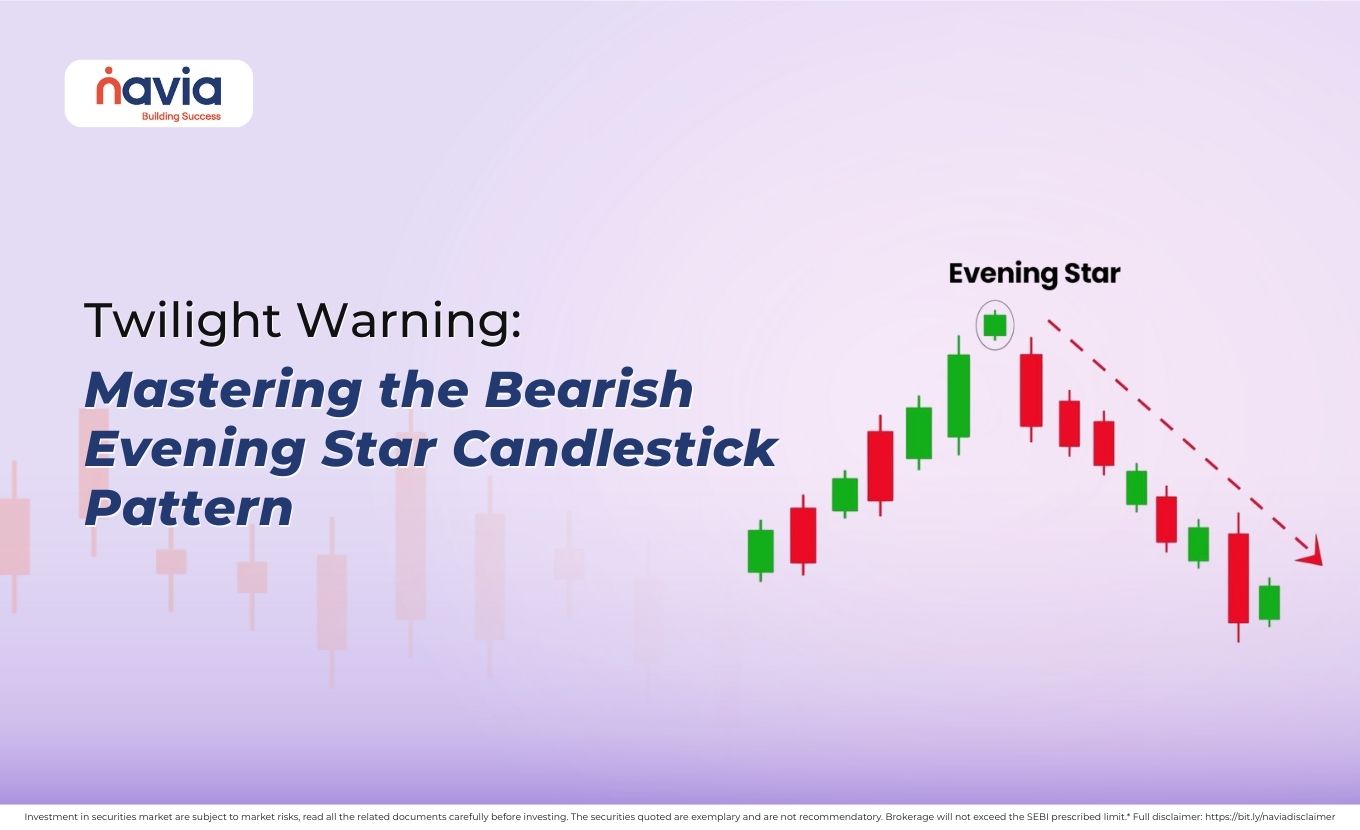How Copper Futures Can Energize Your Trading Portfolio?

- What are Copper Futures?
- Why Trade Copper Futures?
- Understanding Copper Futures Price: What Moves the Market?
- How to Get Started?
- Conclusion
- Frequently Asked Questions
Copper is also called “Dr. Copper” because it can diagnose the health of the global economy; it is more than just a shiny metal used in wiring and plumbing. It is a fundamental building block of modern civilization that drives everything from renewable energy infrastructure to consumer electronics. This makes copper futures a widely followed market with opportunities for traders and investors who understand its risks.
But what are actually copper futures? And how can you leverage them from global economic trends? This guide will help you to understand the copper futures contract and provide you with an introductory look into copper futures investing for both beginners and experienced traders.
What are Copper Futures?
Copper futures contract is a standardized and legally binding agreement that allows us to buy or sell a specific quantity of copper at a fixed price on a future date. Here you can see a breakdown of what that means:
| Standardized | Each contract has uniform specifications that are set by the exchange. So, it will make contracts easily tradable. |
| Legally Binding | Once you enter into a contract, you are required to fulfill it unless you close your position before the final date. |
| Fixed Price | This is the copper futures price you agree upon when you open the contract. |
| Future Date | This is the expiration or delivery date of the contract. |
Most traders of the copper futures investing don’t intend to take physical delivery of copper. They use these contracts to speculate price movements or to hedge against future price changes for their existing copper holdings.
Why Trade Copper Futures?
Copper futures are known as one of the most actively traded commodities, because of several reasons, some of them are given below:
| Global Economic Indicator | The demand for copper signals is robust manufacturing, construction, and infrastructure development all over the world. |
| Leverage | Futures contracts allow traders to control a large amount of a commodity with a small amount of capital that is called margin. |
| Hedging Opportunities | For businesses involved in the copper industry like miners, manufacturers, and fabricators. So, copper futures act as a vital tool to hedge against adverse price movements. |
| Diversification | If an investor adds copper futures to their portfolio, it can provide diversification benefits. |
| High Liquidity | Copper futures are highly liquid; it means traders can usually enter and exit positions easily without impacting the market price. |

Understanding Copper Futures Price: What Moves the Market?
The copper futures price is influenced by a complex interplay of supply and demand factors on a global scale. The major key drivers include;
Global Economic Growth
Industrial activity is the best driver. Data releases on manufacturing PMIs (Purchasing Managers’ Index), GDP growth rates, and infrastructure spending from major economies heavily influence prices.
Inventory Levels
Global copper inventories are closely watched, like LME, COMEX, and SHFE. And also, the low inventory levels will demand tighter supply, and that can lead to price increases.
Trade Wars and Tariffs
Geopolitical tensions and trade wars (like US-China) can disrupt supply chains, impact demand, and create volatility in copper futures price.
US Dollar Strength
Most commodities are priced in US Dollars, so a stronger USD makes copper more expensive for holders of other currencies. Like that, a weaker USD can make copper more attractive too.
Renewable Energy and EV Demand
We know the transition to a green economy is a long-term driver. Electric vehicles, solar panels and wind turbines need some amounts of copper, so that creates a new demand for the commodity.
How to Get Started?
Copper futures investing isn’t suitable for everyone, because it involves significant risk due to leverage. So, for those who are prepared, here’s a basic roadmap:
Education is Key
Before starting to invest you must understand how futures markets work, including the major concepts like margin, leverage, delivery and rollovers. And also remember that never invest more than you can afford to lose.
Select a Reputable Futures Broker
You need a brokerage account to start futures trading, so you must select a broker that offers futures trading. Keep in mind selecting brokers who have low commissions, a reliable trading platform, and good customer support.
Understand Margin Requirements
Futures trading requires you to put up a small percentage of the contract’s total value as the initial margin. It’s not like a down payment; it’s like a performance bond. If your position moves against you, you receive a maintenance margin call that requires you to deposit more funds to avoid liquidation.
Develop a Trading Strategy
First, you must understand that you’ll be a short-term speculator or long-term trend follower. According to your need to develop a trading strategy that should have both technical (chart patterns, indicators) and fundamental (economic data, supply reports) analysis.
Risk Management
Use stop-loss orders to limit potential losses, and never over-leverage your account. And positioning sizing is critical.
Consider Mini or Micro Futures
For new investors in copper futures investing, some exchanges offer mini or micro futures contacts. These smaller quantities of copper will reduce the nominal value of each contract and make them accessible with lower margin requirements.
Conclusion
Copper Futures is offering a dynamic and exciting opportunity for investors. From speculation of the global economy to hedging physical copper exposure, the copper futures contract acts as a versatile tool. And the volatility of the copper futures price demands respect and careful risk management from traders.
We know the world continues the journey towards electrification and sustainable infrastructure. Copper’s role in global industries suggests it may continue to attract market interest, making copper futures a segment many traders monitor closely. So, shine on and may your trades be bright!
Do You Find This Interesting?
Frequently Asked Questions
Is copper expected to go up?
Many analysts forecast an upward trend for copper prices over the medium- to long-term, driven by strong fundamentals. The primary drivers are the global energy transition (electrification, solar, wind, and Electric Vehicles, which are copper-intensive) and a projected supply deficit (demand is expected to outpace mining supply).
Is copper a good future investment?
To engage in copper futures investing, you need to:
➱ Open a brokerage account that is registered to trade futures contracts (e.g., on exchanges like COMEX or LME).
➱ Deposit the required initial margin into your account. This is a small percentage of the contract’s total value, acting as a performance bond, not a down payment.
➱ Specify the contract (e.g., standard or mini/micro contract), the exchange, the month of maturity (e.g., December 2025 contract), and the price.
Will copper go up in 2026?
Some analysts expect copper prices to remain firm over the medium term due to supply–demand dynamics, but actual price movements will depend on global economic and market conditions. The bullish outlook is driven by two main factors:
◉ Structural Demand: Continuous, massive demand from the global energy transition (EVs, wind, solar, and grid upgrades).
◉ Supply Deficit: Anticipated long-term supply shortages as new mining capacity struggles to keep pace with demand growth.
While the exact copper futures price depends on 2026 global GDP growth and inventory levels, the fundamental supply-demand imbalance suggests a strong likelihood of prices remaining at high levels or moving higher.
Which copper stock is best?
There is no single “best” copper stock; the choice depends on your investment strategy (e.g., growth vs. dividend income) and risk tolerance. Major global copper stocks are often cited by analysts for their size, reserves, and production capacity.
Will copper ever skyrocket?
Copper prices can experience sharp moves during periods of supply tightness, but outcomes depend on multiple uncertain factors. Analysts have previously issued long-term forecasts of prices reaching as high as $12,000 to $15,000 per metric tonne due to:
➤ Unexpected shutdowns of large mines
➤ A massive, coordinated global infrastructure spending push, especially related to the build-out of new power grids and EV charging networks.
The “skyrocketing” potential is rooted in the fact that it takes many years to bring a new mine online, making supply relatively inflexible to sudden demand surges.
DISCLAIMER: Investment in securities market are subject to market risks, read all the related documents carefully before investing. The securities quoted are exemplary and are not recommendatory. Full disclaimer: https://bit.ly/naviadisclaimer.






